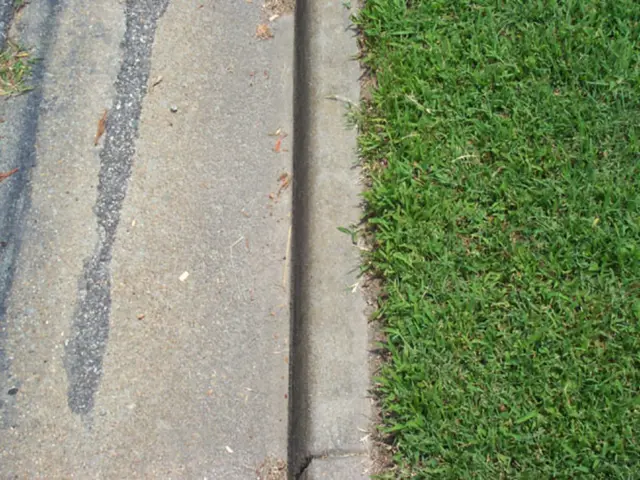Differentiating Age Spots from Skin Cancer: Recognizing Signs and Symptoms
Hey there! Let's dive into the world of those pesky marks that show up on our skin as we age – age spots and skin cancer. Both can look similar, but there are key differences that set them apart.
Age spots, also known as solar lentigines or liver spots, are small patches that are darker than the surrounding skin. They're generally flat, smooth, and don’t itch or feel crusty. Age spots appear due to the body overproducing melanin to safeguard the skin from harmful UV radiation. These spots are more common in people with lighter skin, and typically show up during middle age or beyond.
On the other hand, skin cancer is a type of cancer, and like age spots, it's most likely to develop in areas exposed to sunlight. The big difference here is that skin cancer is dangerous and can spread to other parts of the body if left untreated. The three main types of skin cancer are basal cell carcinoma, squamous cell carcinoma, and melanoma. Another similar-looking mark is actinic keratosis, a precancerous growth that can develop due to excessive UV radiation exposure.
Now, you might be wondering – can age spots transform into cancer? Well, age spots cannot metamorphose into cancer, but actinic keratosis, which can resemble age spots, is a precancerous growth and, if left untreated, could potentially lead to cancer. To stay safe, it's essential to keep a close eye on new or changing marks on your skin and consult a healthcare professional if any symptoms of skin cancer or actinic keratosis arise.
Age spot symptoms include being flat and smooth, yellow, brown, or gray, having clear borders, and ranging in size between a few millimeters and centimeters. They frequently appear on sun-exposed areas such as the face, hands, shoulders, feet, arms, and back. Skin cancer symptoms vary, but common warning signs include an asymmetrical shape, irregular edges, changing size, color, or shape, multiple colors, pink, blue, purple, black, or brown coloring, pain, itching, oozing, or bleeding, crusty or scaly patches, and raised red patches. Actinic keratosis symptoms include raised, rough, or scaly patches, red, gray, pink, or skin-colored patches, scaly, rough bumps resembling acne, and horn-like growths.
If you notice any unusual changes in your skin, consult a doctor promptly. Diagnosing skin cancer early can elevate treatment chances and enhance health outcomes. Along with that, age spots usually don't necessitate treatment, but if you wish to reduce their appearance, options like creams, lotions, laser treatments, cryosurgery, microdermabrasion, and chemical peels might be considered.
So there you have it! Age spots and skin cancer may have some resemblance, but by having a keen eye for differences in appearance, texture, and symptoms, you can identify the red flags and act accordingly. Stay sun-smart, and remember regular skin checks can save lives!
References:[1] Mayo Clinic (2022), Age Spots, https://www.mayoclinic.org/diseases-conditions/age-spots/symptoms-causes/syc-20369034[2] American Cancer Society (2022), Basal and Squamous Cell Skin Cancer, https://www.cancer.org/cancer/basal-skin-cancer.html[3] WebMD (2022), Liver Spots (Age Spots), https://www.webmd.com/skin-problems-and-treatments/guide/liver-spots[4] American Academy of Dermatology (2022), Skin Cancer: What You Need to Know, https://www.aad.org/public/diseases/skin-cancer/skincancer-information/mole-month/melanoma[5] American Academy of Dermatology (2022), Age Spots (Liver Spots, Solar Lentigines), https://www.aad.org/public/diseases/cosmetic-procedures/office-procedures/age-spots-treatment
- In dermatology, the field of medical-conditions that affect the skin, both age spots and skin cancer are common, yet they have distinguishing characteristics.
- While age spots, or solar lentigines, are generally harmless, oncology, the science of cancer, observes that skin cancer can be dangerous and may metamorphose into other medical-conditions if left untreated.
- Seniors, typically those aged 50 and above, may find themselves dealing with both age spots and skin cancer, as both conditions are more common in sun-exposed areas and can be aggravated by lengthy sun exposure.
- Skin care, a part of health-and-wellness, encourages regular checks for skin-conditions by professionals and the use of sunscreen to protect against harmful UV radiation.
- When treating skin-conditions, seniors, and others, it's essential to consider the skin-care options available, such as creams, lotions, and laser treatments, to reduce the appearance of age spots or to diagnose and treat skin cancer.








